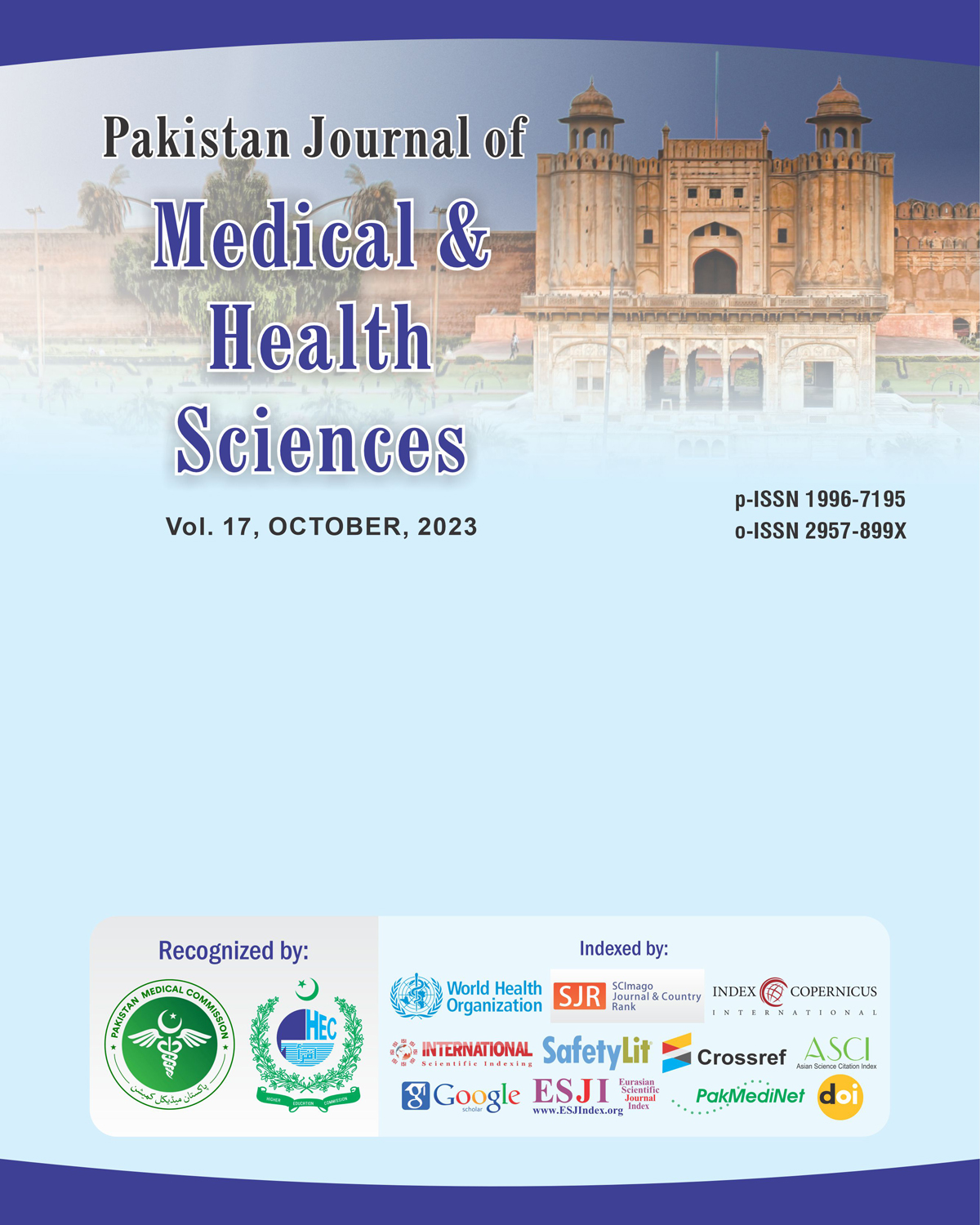Age-Related Anatomical Variations in the Prostate Gland, Implications for Urological Health and Disease Progression
DOI:
https://doi.org/10.53350/pjmhs2023171061Abstract
Background: Lower urinary tract symptom (LUTS) due to benign prostatic hyperplasia (BPH) is the most common disorder of aging male that affects the overall quality of life. They are also important in early diagnosis and management of the anatomical and pathological changes with aging.
Objectives: The goal of this study was to determine how age-related prostate enlargement affects the clinical outcome parameters including prostate volume, LUTS severity, PSA levels, and pathologic changes. It also seeks to find correlations between these factors, and early intervention and therapeutic advancements in the areas of these factors.
Methods: The study was carried out cross sectionally by investigating n=60 male patients divided into three age groups: 40–50 years, 51–65 years and 66–80 years. International Prostate Symptom Score (IPSS), prostate specific antigen (PSA) levels and urinary flow rates were included in the clinical assessment. Imaging modalities as well as histopathological analysis were used to evaluate prostate volume, stromal proliferation, epithelial hyperplasia and fibrosis.
Results: There existed a strong correlation between prostate enlargement, increasing age, and worsening LUTS. PSA levels were elevated, urinary flow rates were lower and IPSS scores were increased in older patients. It progressed with enlargement of the transition zone, and urethral compression increased. Stromal proliferation, epithelial hyperplasia and fibrosis were confirmed histologically and the role of chronic inflammation in BPH progression was demonstrated.
Conclusion: Aging is concluded to be a major contributor to prostate enlargement and LUTS severity. Disease progression can be managed through early detection and intervention and improved patient outcomes. Future research should involve elucidation of molecular pathways involved in inflammation and the development of novel therapeutic approaches.
Keywords: Benign prostatic hyperplasia, aging, lower urinary tract symptoms, prostate volume, PSA, fibrosis, inflammation, histopathology.
Downloads
How to Cite
Issue
Section
License
Copyright (c) 2023 Muhammad Umar, Muhammad Faisal Khan, Mushtaq Ahmad, Aneela Ahsan, Misbah Ishtiaq, Muhammad Hamza Azhar

This work is licensed under a Creative Commons Attribution 4.0 International License.


